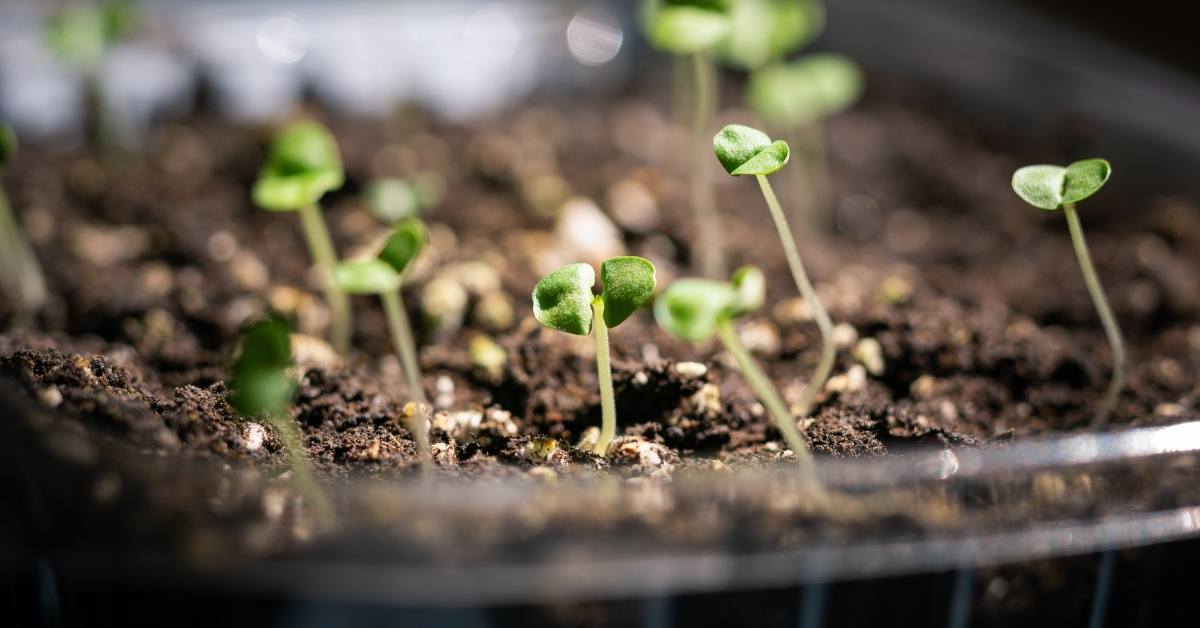Did you know that by adding some greenery to your life, you can breathe easier, sleep better, and feel more energized and productive?
In today’s fast-paced and increasingly indoor-centric world, ensuring the quality of the air we breathe has become more vital than ever. Thankfully, nature has a solution that not only adds beauty to our surroundings but also replenishes the very essence of life: oxygen.
Enter oxygenating plants, the unsung heroes of indoor and pond environments. These remarkable green companions have the unique ability to produce oxygen while absorbing harmful carbon dioxide, effectively rejuvenating the air we depend on.
In this comprehensive guide, we will delve into the world of oxygenating plants, exploring the best choices for indoor and pond settings, uncovering their air-purifying capabilities, and revealing how they contribute to our health and well-being. Join us as we unlock the power of oxygenating plants and learn how to create a fresh and invigorating atmosphere in our homes and gardens.
“Plants are the lungs of the earth, and by breathing in their fresh air, we can nourish our own lungs and souls.”
Anonymous
Oxygenating Plants: An Overview

When it comes to revitalizing the air we breathe, oxygenating plants take center stage. These remarkable botanical wonders possess a unique ability to generate oxygen through the process of photosynthesis while simultaneously absorbing carbon dioxide. By harnessing the power of sunlight, chlorophyll-rich oxygenating plants convert this vital gas into the life-sustaining oxygen that not only supports their own growth but also offers a breath of fresh air to those in their vicinity.
Oxygenating plants are nature’s built-in air purifiers, playing a crucial role in maintaining a healthy and balanced environment. As we go about our daily lives, indoor spaces can often become laden with various pollutants, including volatile organic compounds (VOCs), such as formaldehyde, benzene, and trichloroethylene, which are commonly emitted by household products, furniture, and synthetic materials. These pollutants can have a detrimental impact on our well-being, leading to symptoms like headaches, allergies, and fatigue.
However, we may successfully address these concerns by adding oxygenating plants to our interior areas!
These green companions actively filter the air, removing harmful substances and releasing oxygen as a byproduct. They act as natural air purifiers, reducing the concentration of pollutants and creating a healthier, fresher atmosphere for us to breathe.
Moreover, the benefits of oxygenating plants extend beyond their air-purifying capabilities. Research has shown that these plants contribute to a more comfortable and pleasant indoor environment by regulating humidity levels.
They release moisture through a process called transpiration, which can help combat dryness in the air, particularly during winter months or in air-conditioned spaces. This natural humidifying effect can alleviate respiratory discomfort, prevent dry skin, and reduce the risk of respiratory infections.
Additionally, oxygenating plants have been found to enhance cognitive function and productivity. Studies have demonstrated that the presence of plants in indoor spaces can improve focus, concentration, and overall mental well-being.
Greenery has a calming effect, reducing stress levels and promoting a sense of tranquility. By creating a visually appealing and harmonious atmosphere, oxygenating plants contribute to a more productive and uplifting environment, whether it’s in our homes, offices, or educational institutions.
Let’s dive into the fascinating realm of these green allies and discover how they can truly revolutionize the air we breathe.
Best Oxygenating Indoor Plants
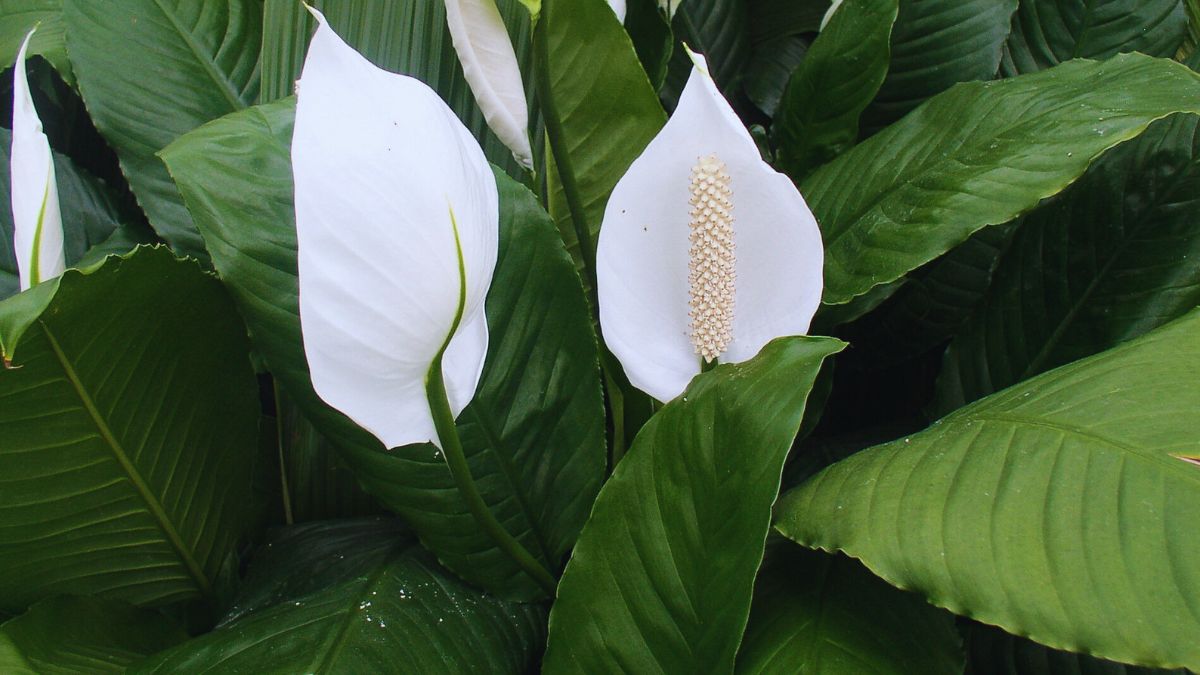
As an avid gardener and lover of all things green, I am thrilled to share with you the crème de la crème of oxygenating indoor plants. These botanical beauties not only add a touch of nature’s elegance to our indoor spaces but also work tirelessly behind the scenes to improve air quality and oxygenate our surroundings.
- Peace Lily (Spathiphyllum):
With its lush, dark green foliage and elegant white blooms, the Peace Lily is a top contender in the world of oxygenating indoor plants. This tropical gem not only enhances the aesthetic appeal of any room but also excels at removing common air pollutants like formaldehyde, benzene, and trichloroethylene. Its air-cleansing prowess makes it a perfect choice for bedrooms, living rooms, and offices where fresh, clean air is essential.
When it comes to caring for the Peace Lily, provide it with bright, indirect light and keep its soil evenly moist. This plant thrives in moderate humidity levels, making it an ideal choice for bathrooms or kitchens. However, do exercise caution as its leaves are toxic to pets, so ensure it is placed out of their reach.
- Snake Plant (Sansevieria trifasciata):
Known for its striking vertical leaves resembling a snake’s skin, the Snake Plant is a champion for oxygenation. This resilient plant emits oxygen during the night while absorbing carbon dioxide, making it an excellent choice for bedrooms. It also filters out toxins such as formaldehyde and benzene, improving the air quality in our living spaces.
Caring for a Snake Plant is a breeze, as it thrives in a wide range of light conditions, from low to bright indirect light. Water it sparingly, allowing the soil to dry out between waterings, as it is susceptible to root rot if overwatered. With its architectural beauty and air-purifying abilities, the Snake Plant is a must-have for any indoor garden.
- Boston Fern (Nephrolepis exaltata):
If you’re seeking an oxygenating indoor plant that adds a touch of lush greenery to your space, look no further than the Boston Fern. With its delicate, feathery fronds, this classic houseplant not only acts as a natural humidifier but also excels at removing toxins from the air, such as formaldehyde and xylene.
To keep your Boston Fern happy, place it in a spot with bright, indirect light, away from direct sunlight. These ferns thrive in high humidity, so misting their fronds regularly or placing them on a tray filled with pebbles and water can help create a more humid microclimate. Keep the soil consistently moist, but avoid waterlogging, as it can lead to root rot.
- Chinese Evergreen (Aglaonema):
For those seeking a low-maintenance oxygenating plant that also adds a touch of exotic beauty, the Chinese Evergreen is an ideal choice. With its stunning foliage showcasing various shades of green, silver, and even red, this plant excels at removing toxins like formaldehyde and benzene from the air.
Chinese Evergreens are highly adaptable and can tolerate a wide range of light conditions, from low to bright indirect light. Water them moderately, allowing the soil to dry out slightly between waterings. These plants thrive in average room humidity levels, making them well-suited for various indoor spaces.
Growing these best oxygenating indoor plants into your living spaces not only enhances the visual appeal but also promotes a healthier, more oxygen-rich environment. With their air-purifying abilities and relatively low maintenance requirements, these green companions are excellent choices for beginners and seasoned gardeners alike. So, why not bring the power of nature indoors and experience the transformative impact of oxygenating plants firsthand?
Oxygenating Pond Plants
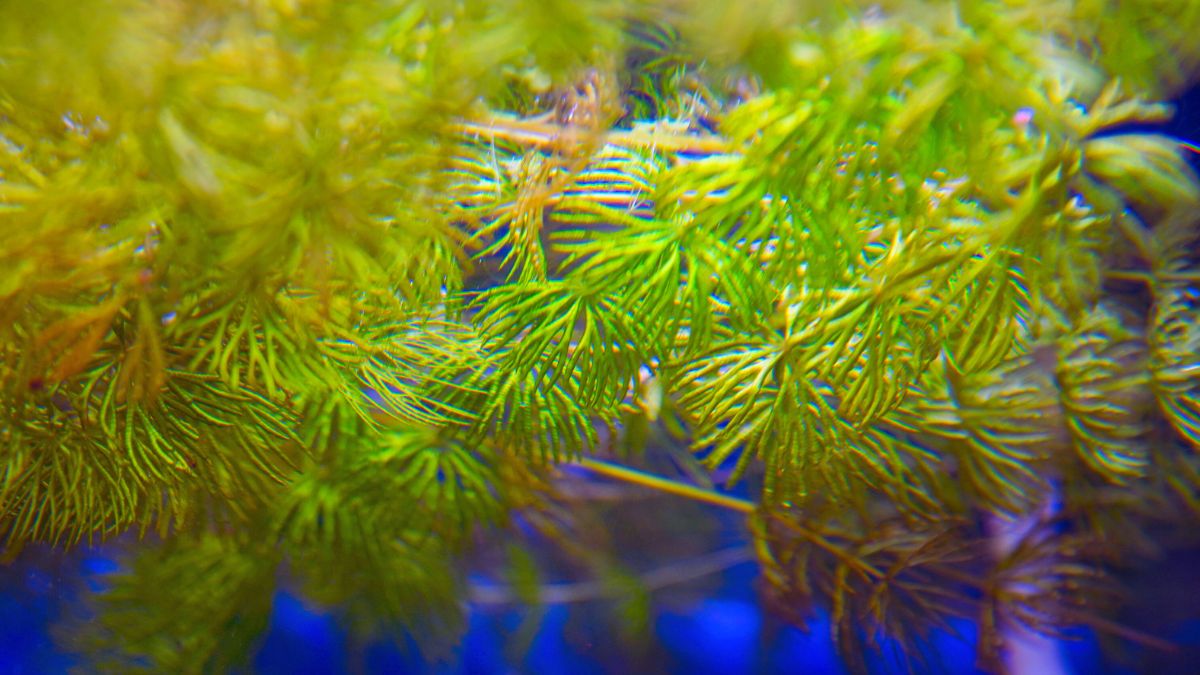
Ponds are serene aquatic havens that contribute to the overall beauty and ecological balance of our outdoor spaces. To maintain a healthy and vibrant pond ecosystem, the presence of oxygenating pond plants is of paramount importance. These plants play a crucial role in oxygenating the water, providing habitat and food for aquatic organisms, and promoting overall water clarity.
- Hornwort (Ceratophyllum demersum):
One of the most popular oxygenating pond plants, Hornwort, also known as Coontail, is a submerged plant with delicate, feathery foliage. Its ability to absorb nutrients and release oxygen makes it a vital component in maintaining optimal water conditions. Hornwort thrives in a variety of water depths, making it suitable for ponds of different sizes. It can float freely or anchor itself in the substrate, providing cover and shelter for fish and other aquatic creatures. - Waterweed (Elodea canadensis):
Waterweed, also called Canadian Pondweed, is a fast-growing submerged plant known for its exceptional oxygenating capabilities. Long, slender leaves provide ample surface area for oxygen exchange. Waterweed absorbs excess nutrients, including nitrates and phosphates, which helps prevent algae blooms and maintain water clarity. Its rapid growth also provides shelter for fish and invertebrates, promoting a balanced ecosystem within the pond. - Watermilfoil (Myriophyllum):
Watermilfoil is a versatile oxygenating pond plant that comes in various species, including Eurasian Watermilfoil (Myriophyllum spicatum) and Parrot’s Feather (Myriophyllum aquaticum). These plants have finely divided, feathery leaves that create a lush underwater landscape. Watermilfoil absorbs nutrients and oxygenates the water while providing hiding places for small fish and invertebrates. However, be cautious with invasive species like Eurasian Watermilfoil, as they can outcompete native plants and disrupt the pond ecosystem. - Water Starwort (Callitriche stagnalis):
Water Starwort is a small, delicate oxygenating plant that floats on the water’s surface or anchors itself in shallow areas. With its star-shaped leaves, this plant creates a visually appealing green carpet across the pond. Water Starwort is an excellent choice for smaller ponds or areas with slow-moving water. It thrives in full sun to partial shade and contributes to oxygenation while providing shelter for aquatic organisms.
Planting these oxygenating pond plants into your water feature brings numerous benefits.
Firstly, they help oxygenate the water, which is essential for the health and survival of fish and other aquatic life. By releasing oxygen through photosynthesis and absorbing carbon dioxide, these plants create a balanced environment where fish can thrive.
Additionally, oxygenating pond plants play a significant role in nutrient uptake, reducing the presence of excess nutrients that can lead to algae blooms and water quality issues.
When introducing oxygenating pond plants, it’s essential to consider the specific needs of each species and the size of your pond. Some plants may be better suited for larger ponds with deeper water, while others thrive in shallower areas. Proper placement and distribution of these plants ensure efficient oxygenation and aesthetic appeal.
To maintain a thriving pond ecosystem, regular monitoring and maintenance are necessary. Periodically thinning and pruning oxygenating plants will prevent excessive growth and maintain a healthy balance within the pond. Be cautious of any invasive species and avoid introducing plants that can overtake native flora.
You may enhance the aesthetic of your pond while simultaneously supporting the health and vitality of aquatic life by introducing oxygenating pond plants. By providing sufficient oxygen levels, nutritional balance, and water clarity, these plants support a healthy ecology.
So, why not invite these submerged wonders into your pond and enjoy the benefits of their oxygenating prowess?
Oxygenating Plants for Indoor Spaces
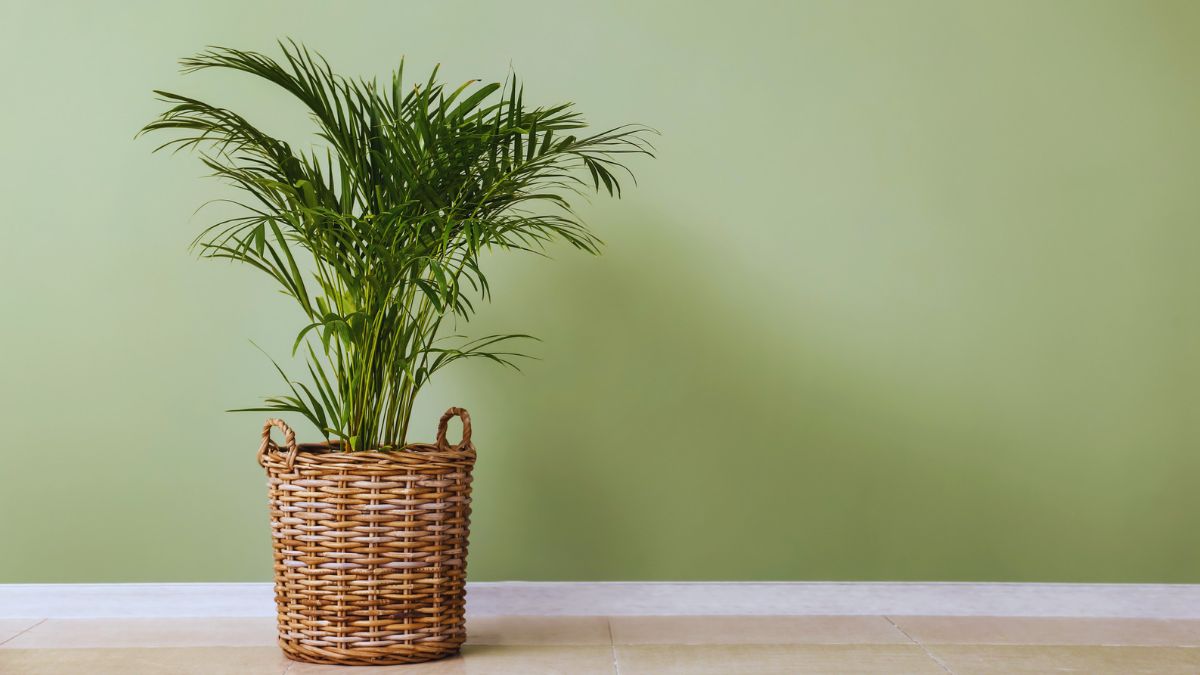
Bringing the natural world indoors has a transformative effect on our living spaces. Not only do indoor plants add a touch of vibrancy and beauty, but they also play a vital role in purifying the air we breathe. When it comes to selecting the best oxygenating plants for your indoor spaces, several exceptional choices excel at releasing oxygen and improving air quality. Let’s explore some of these green champions and discover how they can enhance your indoor environment.
- Areca Palm (Dypsis lutescens):
The Areca Palm, also known as the Butterfly Palm, is a magnificent tropical plant that tops the charts in terms of oxygen production. With its feathery, arching fronds, this palm not only adds a touch of elegance to any room but also excels at removing indoor air pollutants. It efficiently filters formaldehyde, xylene, and toluene, which are commonly found in household products and synthetic materials.
To ensure the Areca Palm thrives indoors, place it in a well-lit area with bright, indirect light. It appreciates moderate humidity levels, so misting its fronds or placing a tray of water nearby can help create a more humid microclimate. Water the palm thoroughly when the top inch of soil feels dry, but be cautious not to overwater as it can lead to root rot.
- Spider Plant (Chlorophytum comosum):
The Spider Plant is a classic choice for indoor gardeners, renowned for its resilience, air-purifying abilities, and cascading foliage. It ranks high among oxygenating plants and effectively filters formaldehyde, xylene, and carbon monoxide from the air. Additionally, it releases oxygen while absorbing harmful chemicals, creating a fresher and healthier indoor environment.
Spider Plants thrive in bright, indirect light but can tolerate lower light conditions. They are forgiving when it comes to watering and prefer evenly moist soil. The plant produces small “spiderettes,” or baby plants that dangle from arching stems, adding a delightful touch to its overall charm.
- Dracaena (Dracaena spp.):
Dracaena encompasses a diverse group of plants with various species, including Dracaena marginata, Dracaena fragrans, and Dracaena deremensis. These plants are known for their striking foliage and air-purifying qualities. Dracaenas effectively filter toxins like benzene, trichloroethylene, and formaldehyde, making them excellent choices for enhancing indoor air quality.
Depending on the species, Dracaenas can thrive in a range of light conditions, from moderate to bright indirect light. They prefer to be kept slightly on the drier side, so allow the soil to dry out partially between waterings. With their tall architectural forms and air-purifying abilities, Dracaenas make bold statements in any indoor setting.
- Aloe Vera (Aloe barbadensis):
Aloe Vera is not only renowned for its soothing gel but also for its remarkable oxygenating capabilities. This succulent plant not only releases oxygen during the day but also continues to do so at night, making it an excellent choice for bedrooms. Aloe Vera filters formaldehyde and benzene, which can be present in cleaning products and synthetic materials.
Aloe Vera thrives in bright, indirect light but can tolerate lower light conditions. It prefers well-draining soil and should be watered thoroughly but infrequently, allowing the soil to dry out between waterings. This low-maintenance plant not only adds a touch of green to your indoor spaces but also contributes to a healthier and fresher atmosphere.
These plants not only produce oxygen but also filter out harmful chemicals, improving indoor air quality and promoting a sense of well-being. Select the plants that align with your preferences and care requirements, and let them work their magic in oxygenating your indoor spaces.
Improving Indoor Air Quality with Oxygenating Plants
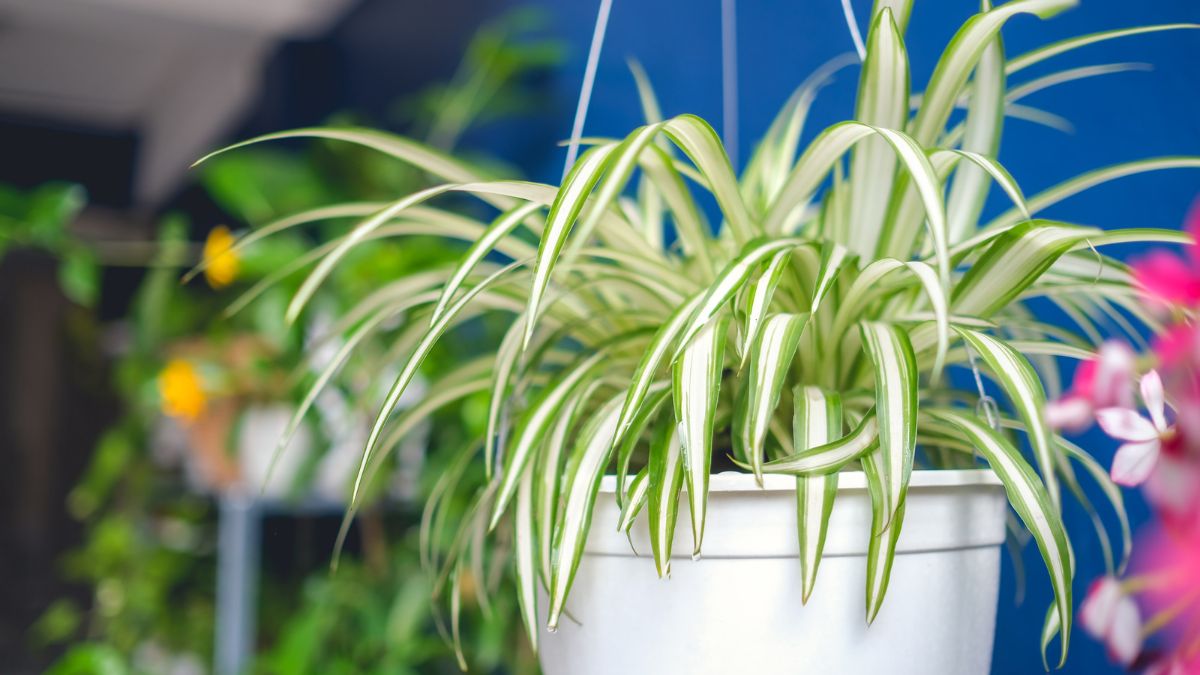
In our quest for healthier living spaces, the role of indoor plants in improving air quality cannot be overstated. Oxygenating plants, with their ability to release oxygen and remove harmful pollutants, offer a natural and effective solution for enhancing indoor air quality. Let’s delve into how these green allies work their magic and discover how to optimize their air-purifying capabilities in different areas of your home or office.
- The Air-Purifying Power of Oxygenating Plants:
Indoor air pollution is a significant concern, as our modern lifestyles often expose us to various pollutants originating from cleaning products, synthetic materials, and even outdoor contaminants that seep indoors. These pollutants can have adverse effects on our respiratory health and overall well-being. Thankfully, oxygenating plants have a unique ability to combat these issues.
Through the process of photosynthesis, oxygenating plants absorb carbon dioxide and release oxygen. In addition to this natural oxygenation, they also actively filter out harmful substances present in the air. These plants absorb airborne toxins, such as formaldehyde, benzene, and xylene, through their leaves and root systems, effectively reducing their presence in the indoor environment. b
- Optimizing Oxygenation in Different Areas:
To maximize the air-purifying benefits of oxygenating plants, strategic placement is key. Here are some tips for optimizing oxygenation in different areas of your home or office:
- Living Room: Place oxygenating plants such as the Areca Palm, Spider Plant, or Dracaena near windows or in areas with ample natural light. These plants will not only oxygenate the air but also add a touch of greenery to your living space.
- Bedroom: Aloe Vera and Snake plants are excellent choices for bedrooms, as they release oxygen at night. Their ability to filter out toxins and their calming presence can contribute to a better night’s sleep and improved air quality in the room.
- Home Office: Utilize oxygen-producing plants like Peace Lily or Chinese Evergreen to transform your workstation into a healthier and more effective environment. These plants can help remove volatile organic compounds (VOCs) emitted by office equipment and improve the overall air quality in your workspace.
- Kitchen: The kitchen is often a hotspot for airborne pollutants due to cooking activities. Consider placing plants like Boston Fern or English Ivy in this area to help absorb and filter out cooking-related odors and contaminants.
- Bathroom: Bathrooms can benefit from the moisture-loving qualities of oxygenating plants such as the Boston Fern or Peace Lily. These plants thrive in high humidity and can help naturally regulate moisture levels while oxygenating the air.
- Maintenance and Care:
To ensure optimal air-purifying performance, it’s essential to provide proper care for your oxygenating plants. Here are some general guidelines to keep in mind:
a. Lighting: Most oxygenating plants thrive in bright, indirect light. Find the right balance of light exposure for your plants to ensure their growth and oxygenation capabilities are maximized.
b. Watering: Each plant has specific watering needs, so it’s crucial to understand the requirements of the oxygenating plants you choose. Avoid overwatering, as it can lead to root rot, and aim for consistent moisture levels without allowing the plants to sit in waterlogged soil.
c. Cleaning: Dust can accumulate on plant leaves, hindering their ability to photosynthesize and filter the air. Regularly wipe the leaves gently with a damp cloth to keep them clean and free from dust.
d. Plant Selection: Choose plants that align with your skill level and the conditions of your indoor space. Consider factors such as light availability, humidity levels, and maintenance requirements when selecting oxygenating plants for specific areas.
When you strategically place and care for oxygenating plants in your indoor spaces, you can significantly improve air quality, reduce the presence of toxins, and create a healthier living or working environment. These green allies not only enhance the aesthetic appeal of your space but also contribute to your overall well-being. Embrace the power of oxygenating plants and let them breathe new life into your indoor world.
Tips for Choosing Oxygenating Plants for Ponds
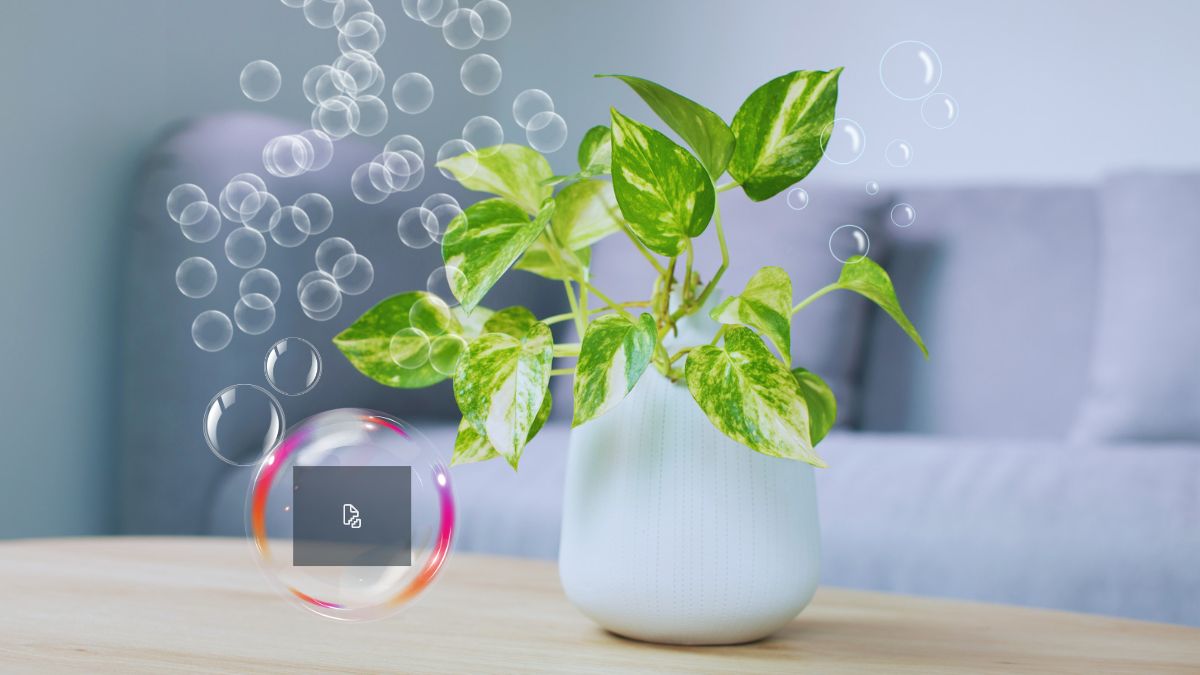
Ponds are enchanting aquatic ecosystems that add beauty and tranquility to our outdoor spaces. To maintain a healthy and balanced pond environment, incorporating oxygenating plants is essential. These plants play a vital role in oxygenation, nutrient uptake, and overall ecosystem health. In this comprehensive guide, we will explore the factors to consider when choosing oxygenating plants for your pond, strategies for incorporating them effectively, and how to create a harmonious ecosystem with the right mix of oxygenating plants.
Factors to Consider when Choosing Oxygenating Plants for Ponds:
- Light Requirements: Different oxygenating plants have varying light requirements. Some thrive in full sun, while others prefer shade or partial shade. Assess the lighting conditions of your pond to select plants that will thrive in that specific environment.
- Water Depth: Consider the depth of your pond when selecting oxygenating plants. Some plants are better suited for shallow water, while others can thrive in deeper areas. Creating different water depths within your pond will allow for a diverse range of oxygenating plant species.
- Growth Rate and Spreading Habit: Oxygenating plants have different growth rates and spreading habits. Some plants grow rapidly and can become invasive if not managed properly. Evaluate the growth habits of the plants you choose to ensure they won’t overwhelm other aquatic species in your pond.
- Native vs. Non-Native Species: Choosing native oxygenating plants is generally recommended as they are well-adapted to the local ecosystem and support the native biodiversity. Non-native species may outcompete native plants and disrupt the balance of the pond ecosystem.
Strategies for Incorporating Oxygenation in Different Pond Sizes:
- Large Ponds: In larger ponds, a mix of submerged and floating oxygenating plants can be used to maximize oxygenation. Submerged plants like Hornwort and Waterweed can be placed at different depths to ensure efficient oxygenation throughout the water column. Floating plants like Water Lilies can provide shade and help reduce algae growth while contributing to oxygenation.
- Small Ponds: For smaller ponds, it’s important to select oxygenating plants that are suitable for the limited space. Consider plants like Water Starwort or Watermilfoil, which are ideal for compact ponds. Avoid overcrowding by selecting plants that will grow within the available space without dominating the ecosystem.
- Containers and Water Features: If you have a pond in a container or a smaller water feature like a fountain or a pondless waterfall, you can still incorporate oxygenating plants. Choose smaller oxygenating plants that can thrive in confined spaces, such as Water Hawthorn or Watercress. These plants will add beauty while contributing to the oxygenation of the water.
Creating a Balanced Ecosystem:
- Biodiversity: Incorporating a variety of oxygenating plants in your pond promotes biodiversity and a healthy ecosystem. Different plants offer various benefits, including oxygenation, nutrient uptake, and shelter for fish and other aquatic organisms. Aim for a balanced mix of plants to create a harmonious environment.
- Maintenance and Control: Regular maintenance is crucial to ensure the optimal performance of oxygenating plants. Monitor the growth of the plants and thin them out when necessary to prevent overgrowth and maintain a healthy balance. Remove any dead or decaying plant material to prevent water quality issues.
- Fish and Wildlife Considerations: When selecting oxygenating plants, consider the needs of fish and other wildlife in your pond. Some plants provide essential cover and spawning areas for fish, while others may be preferred food sources. Balance the needs of the plants with the requirements of the aquatic life to create a thriving ecosystem.
You can enhance oxygenation, nutrient balance, and overall pond health by carefully selecting and incorporating oxygenating plants into your pond. These plants not only add beauty and serenity but also contribute to a flourishing aquatic ecosystem. Embrace the power of oxygenating plants and create a pond that teems with life and vitality.
Oxygenating Plants for Health and Well-being

Beyond their aesthetic appeal and air-purifying abilities, oxygenating plants have a profound impact on our health and overall well-being. Research has shown that surrounding ourselves with these green allies can contribute to improved physical health, enhanced mental well-being, and a more rejuvenating living environment. Let’s explore the positive impact of oxygenating plants on human health and discover how to integrate them into our wellness routines.
Improved Air Quality and Respiratory Health:
Oxygenating plants are natural air purifiers, filtering out harmful pollutants and releasing oxygen. By reducing the presence of airborne toxins like formaldehyde, benzene, and xylene, these plants create a cleaner and fresher indoor environment. This improved air quality can lead to a range of health benefits, particularly for individuals with respiratory conditions such as asthma or allergies. Oxygenating plants help minimize triggers and create a more conducive space for respiratory health.
Stress Reduction and Mental Well-being:
The presence of oxygenating plants has a calming and stress-reducing effect on our minds and bodies. Studies have demonstrated that being surrounded by greenery can lower blood pressure, reduce stress levels, and improve mood. The soothing presence of plants promotes relaxation, creating a more tranquil and peaceful atmosphere in our homes and workplaces. Oxygenating plants also contribute to increased focus, productivity, and overall mental well-being, helping us navigate the challenges of daily life with greater ease.
Connection with Nature and Biophilic Design:
Humans have an innate connection with nature, and incorporating oxygenating plants into our living spaces allows us to bring that connection indoors. Biophilic design, which emphasizes the integration of natural elements into our built environments, has gained popularity due to its positive impact on human well-being.
Oxygenating plants play a crucial role in biophilic design, fostering a sense of harmony and connection with the natural world. They help bridge the gap between our indoor spaces and the outdoors, creating a more harmonious and nurturing environment.
Incorporating Oxygenating Plants into Your Wellness Routine:
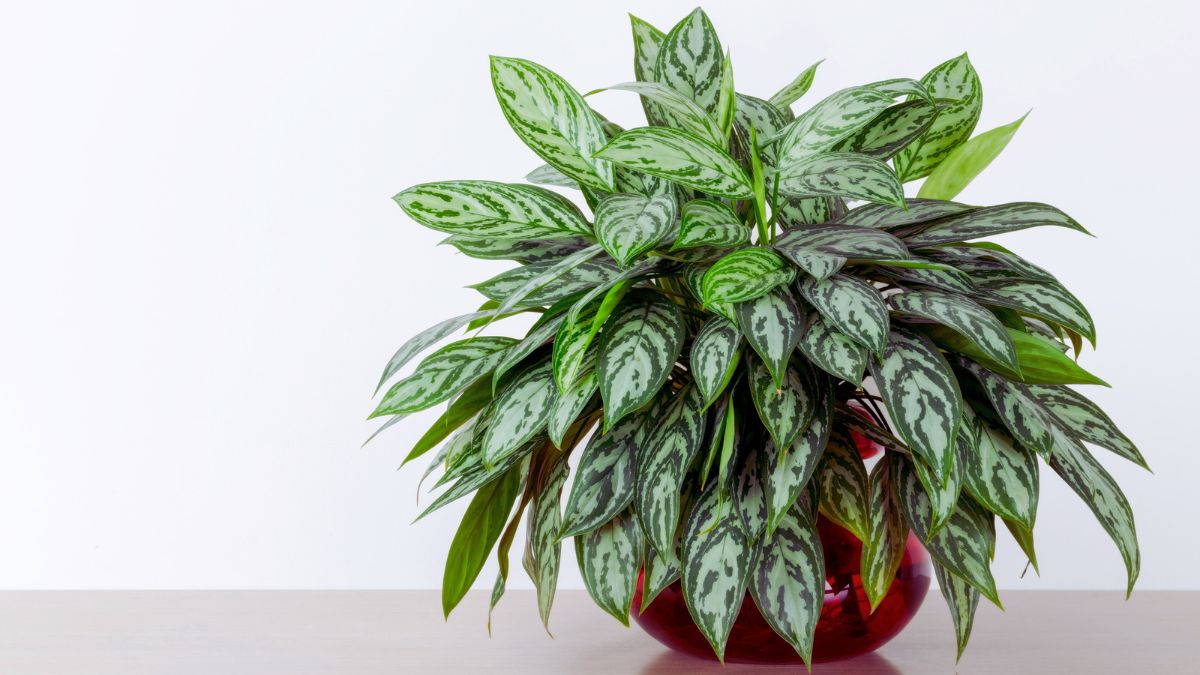
To fully reap the benefits of oxygenating plants for your health and well-being, consider integrating them into your wellness routine:
- Mindful Moments: Take moments throughout the day to connect with your oxygenating plants. Engage in mindful activities such as watering, pruning, or simply observing their growth. Use these moments to center yourself, practice gratitude, and cultivate a deeper connection with nature.
- Breathing Exercises: Harness the power of oxygen by practicing deep breathing exercises in the presence of your oxygenating plants. Inhale deeply, drawing in the fresh oxygen they release, and exhale slowly, releasing any tension or stress. This practice can help calm the mind, reduce anxiety, and improve overall respiratory function.
- Wellness Spaces: Designate a specific area in your home or office as a wellness space filled with oxygenating plants. Create a serene atmosphere with soft lighting, comfortable seating, and natural elements. This dedicated space can serve as a retreat for relaxation, meditation, or practicing yoga, providing a sanctuary for your well-being.
- Plant Care Rituals: Engage in plant care rituals as a form of self-care. Use the act of nurturing and tending to your oxygenating plants as a mindful practice. This can involve tasks like watering, fertilizing, or repotting. Embrace the therapeutic aspects of caring for living organisms and allow it to bring a sense of fulfillment and connection.
Incorporating oxygenating plants into your wellness routine not only enhances the beauty of your living spaces but also contributes to your overall health and well-being. Embrace the restorative power of these green allies and let them be an integral part of your journey toward a healthier and more balanced life.
Conclusion
Oxygenating plants have proven to be more than just decorative additions to our indoor and outdoor spaces. They are invaluable allies in our quest for cleaner air, improved health, and enhanced well-being. By releasing oxygen, filtering out toxins, and creating a harmonious connection with nature, these plants contribute to a revitalized living environment.
In this comprehensive guide, we explored the world of oxygenating plants, from their ability to purify the air we breathe to their role in maintaining balanced pond ecosystems. We delved into the best choices for indoor spaces and ponds, provided insights on optimizing their air-purifying capabilities, and discussed the profound impact they have on our health and mental well-being.
By strategically selecting and caring for oxygenating plants, we can create living and working environments that support our physical and mental health. These green allies offer more than just aesthetic appeal; they provide a breath of fresh air, literally and figuratively.
So, let’s invite these botanical wonders into our homes, offices, and outdoor spaces. Let’s grasp their air-purifying abilities, their calming presence, and their transformative impact on our overall well-being. Whether it’s the elegance of an Areca Palm in our living room, the tranquility of a pond adorned with Water Starwort, or the serenity of a workspace graced by a Spider Plant, the possibilities are endless.
FAQ
What are oxygenating plants, and why are they important?
Oxygenating plants are plants that produce oxygen while absorbing carbon dioxide and other pollutants from the air or water. They are important because they improve the quality of the air we breathe, maintain a healthy and balanced pond ecosystem, and enhance our health and well-being.
What are some of the best oxygenating plants for indoor spaces and ponds?
Some of the best oxygenating plants for indoor spaces are Peace Lily, Snake Plant, Boston Fern, Chinese Evergreen, Areca Palm, Spider Plant, Dracaena, and Aloe Vera. These plants excel at filtering out toxins and releasing oxygen, creating a fresher and healthier indoor environment.
Some of the best oxygenating plants for ponds are Hornwort, Waterweed, Watermilfoil, and Water Starwort. These plants help oxygenate the water, absorb excess nutrients, and provide habitat and food for aquatic organisms.
How can I incorporate oxygenating plants into my wellness routine?
You can incorporate oxygenating plants into your wellness routine by taking mindful moments to connect with them, practicing deep breathing exercises in their presence, creating wellness spaces filled with them, and engaging in plant care rituals as a form of self-care. These activities can help you reduce stress, improve mood, enhance focus, and foster a deeper connection with nature.
